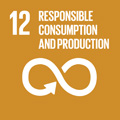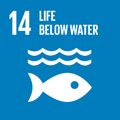- Docente: Maurizio Mazzoni
- Credits: 8
- SSD: VET/01
- Language: Italian
- Moduli: Maurizio Mazzoni (Modulo 1) Maurizio Mazzoni (Modulo 2)
- Teaching Mode: Traditional lectures (Modulo 1) Traditional lectures (Modulo 2)
- Campus: Cesena
- Corso: First cycle degree programme (L) in Aquaculture and Fish Production Hygiene (cod. 6062)
-
from Feb 19, 2025 to Mar 07, 2025
-
from Mar 12, 2025 to May 30, 2025
Learning outcomes
At the end of the course, the student knows the organization, both at the macroscopic and microscopic, of the apparatuses that make up the body of animals. In particular, the student is able to describe the anatomical basis of the apparatus of fishing interest (fish, crustaceans, molluscs and echinoderms). It has the basics to follow critically the teachings of physiology and comparative morpho-functional evaluation of animals.
Course contents
Sampling and processing methods until inclusion of a histological sample. Histological sample processing: sampling, fixation (chemical and physical fixatives), dehydration and inclusion, microtome cutting, histological, histochemical and immunohistochemical staining techniques.
CYTOLOGY. Structural organization of the cell.
HISTOLOGY. Covering epithelium and glandular epithelium. Connective tissues. Adipose tissue. Cartilage. Bone. Muscular tissue: striated muscle (skeletal and cardiac), smooth muscle, mechanism of contraction. Blood: erythrocytes, leukocytes, blood platelets. Nervous tissue.
ANATOMY OF BONE AND CARTILAGINOUS FISH. Locomotor system: axial and appendicular skeleton, myomeres and myosets. Digestive system: mouth, teeth, esophagus, stomach, pyloric caeca, cranial, middle and caudal intestine, liver and exocrine pancreas. Respiratory system: gills, gill slits, gill arches. Swim bladder. Integumentary system: epidermis and dermis, placoid and non-placoid scales, chromatophores. Excretory system: kidneys and relative excretion routes, nephron, nitrogen catabolite excretion. Cardio-circulatory system: heart, arterial and venous system, capillaries, coronary circulation, secondary vascular system. Reproductive system: female genital, oogenesis, oocyte development and maturation, male genital, spermatogenesis, Sertoli cells. Endocrine system: pituitary, epiphysis, thyroid, adrenal, ultimobranchial bodies, Stannius corpuscles, endocrine pancreas and urophysis gland. Central and peripheral nervous system, autonomic nervous system. Blood and hematopoietic organs: blood cells, hematopoietic organs. Lymphoid organs: spleen and thymus. Sense organs: eye (hints), ear and Weber apparatus, olfactory organs, Lorenzini ampoules, lateral line and neuromasts.
BIVALVE MOLLUSCS: shell, mantle and intravalve fluid, adductor muscles, foot, byssus, ctenids, digestive system, excretory system, circulatory system, reproductive system.
CEPHALOPODS MOLLUSCS: mantle, head, arms and tentacles, visceral mass and shell. Mantle musculature. Digestive system: mouth, radula and black bursa. Circulatory system. Respiratory system. Excretory system. Nervous system. Reproductive system: ovary, ectocotyl and spermatophore. Chromatophores and photophores.
CRUSTACEANS. DECAPODS AND STOMATOPODS. External morphology. Integument (exoskeleton). Extensor and flexor muscles. Digestive system. Respiratory system. Circulatory system. Excretory system: green gland. Reproductive system. Nervous system and statocyst. CRABS: hints of external morphology.
ECHINODERMS: SEA URCHIN (Paracentrotus lividus). General external and internal morphology. Digestive system: Aristotle's lantern. Aquifer system.
Readings/Bibliography
Teaching material consists of the suggested textbooks (see below) and of the didactic material put on the specific course website (http://campus.cib.unibo.it [http://campus.cib.unibo.it/] ) or website of the teacher responsible for the course: http://www.unibo.it/sitoweb/m.mazzoni/didattica. In addition, the didactic material is available at the Secretariat of the structure.
The suggested textbooks are:
- H.D. DELLMANN, J.A. EURELL, Istologia e Anatomia Microscopica Veterinaria, 2a edizione, Casa Editrice Ambrosiana, Milano, 2000.
- T. ZAVANELLA, R. CARDANI, Manuale di Anatomia dei Vertebrati, Antonio Delfino Editore, Roma, 2008.
- G.K. OSTRANDER, The laboratory fish, Academic Press, 2000.
- F. GENTEN, E. TERWINGHE, A. DANGUY, Atlas of Fish Histology, Science Publishers, 2009.
- RUPPERT E.E., BARNES R.D., FOX R.S. Zoologia degli invertebrati. Editore: Piccin-Nuova Libraria 2006. ISBN:978-88-299-1808-9.
A.L. MESCHER, Junqueira Istologia, Testo e Atlante, Piccin, 2017.Teaching methods
Teaching consists of 8 CFUs for a total of 80 hours. Of these, 62 hours are dedicated to frontal lessons and 18 hours to practical exercises. Practical exercises are carried out in part using optical microscopes and their respective histological preparations, and in part by dissecting fresh material. Students with disabilities or DSA are invited to contact the teacher in order to better organize teaching and exams
Assessment methods
Learning is assessed by a practical test consisting of recognition of a histological specimen followed by an oral test: each student is asked a minimum of three questions. The evaluation is expressed as a mark out of thirty for the tests. A minimum score of 18/30 is required to pass the examination. In the case of a maximum score (30/30), a distinction may be awarded.
Students have the right to refuse the registration of the positive grade proposed once (University Teaching Regulations ART.16, paragraph 5).
Special attention will be given to the evaluation of students certified according to Law 104/90 and Law 170/2010 or students recognised as having special educational needs (SEN). Students who are recognised as having SEN, in order for the teacher to be able to prepare the teaching instructions and the final assessment required by the regulations, must contact the teacher by e-mail, specifying in the C/C the staff of the Service for Students with Disabilities or the University DSA (https://site.unibo.it/studenti-con-disabilita-e-dsa/it) who will follow them. The contact person for this service is Dr Fabiana Trombetti.
The teacher taking the minutes is Prof. Mazzoni Maurizio.
Teaching tools
PowerPoint. Light microscope. The frontal lessons are supported by projection of images of the tissues. The practical lesson take place in a room equipped with n° 40 microscopes.The studentshave the opportunity to observe a collection of 200 histological preparations (slides), differently stained, concerning all the type of tissue. Each slide is supplied with a legend that gives information about the organ from which the tissue was removed, the organization and the structure of the tissue and on the stain of the sections. The practical lessons are supervised by the teacher of the course.
Office hours
See the website of Maurizio Mazzoni
SDGs


This teaching activity contributes to the achievement of the Sustainable Development Goals of the UN 2030 Agenda.
